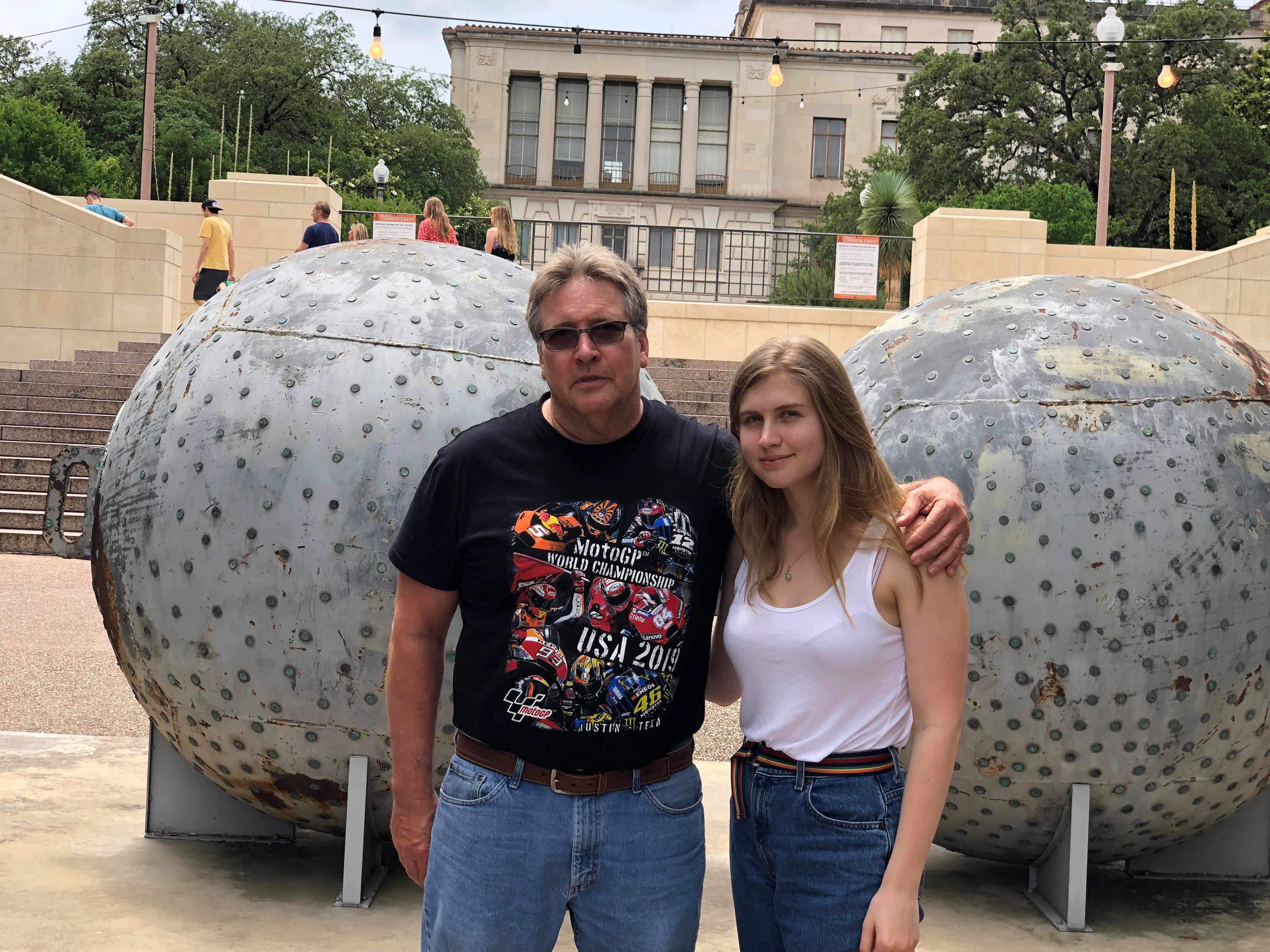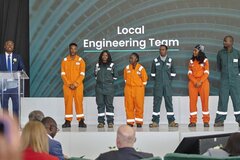One day Dean Gaddy is drilling for oil, the next he’s drilling for pure water. In his role as the Permian Reliability Engineering Manager of Artificial Lift Systems at Baker Hughes, Dean optimizes fossil fuel extraction…on his rural Texas retreat he correlates the sun’s irradiance on any given day with the performance of his solar installation.
In his spare time and when working remotely from his new part-time home, Dean and his 21-year-old daughter Natalie are creating a sanctuary, supported by colleagues and supervisors at Baker Hughes.
His dual-fuel life started during one of many hairy Harley motorcycle rides on the Twisted Sisters, three famously exhilarating Texas Hill Country ranch roads in South Central Texas. Revving, braking and turning through their hairpin bends is guaranteed to focus the senses. On this occasion, Dean looked around and said to his buddy, “I want to invest in this land”. He found 25 acres with a couple of cabins that needed some love, and a sinkhole — Dean, whose first qualification was as a geologist, initially thought from looking at aerial maps that this feature was a meteorite strike. He later discovered it was one of those places where water sinks down through limestone deposited in the Cretaceous seaway some 65 million years ago, wearing it away to cause collapse of the surface at ground level as a perfect oval, while forming an aquifer below.
Natalie was studying Economics and Foreign Affairs at the University of Texas in Austin when COVID-19 hit. “Austin has the most gorgeous campus,” says Dean, but like so many students around the world, Natalie was locked in cramped quarters.

A company culture attuned to supportiveness
Last year, Dean told his supervisors at Baker Hughes, Morteza Fougerdi, Juan Nieto and Dave Dillon, that he felt he had to use their new land as the way to get her away from her tiny apartment. He says, “Our company has had such a great culture during these trying times, and my supervisors immediately supported a part-time remote system of work for me.” The Gaddy’s Texas retreat fortunately had great internet reception from a nearby fiber optic line, but no water or electricity, so once he’d organized grid connection, Dean was able to work from the cabins about one week every month.
Soon after, the father and daughter evolved a plan for using solar power to pump water from the aquifer 400 feet below the surface and to serve all their future electricity needs.
Well, well, well, whaddya know?
Dean channeled his drilling and completion expertise, acquired over the years since he first worked as a driller in Colorado in the late 1970s to raise the money he needed to study geology. Back then, he says he drilled a 7,200-foot oil well in 32 rotating hours in the Denver-Julesburg Basin. His West Texas project progressed a little more slowly: “The ground out there is really, really hard; it’s limestone ledges with chert so I had to get special equipment to dig the trenches, and a hammer bit to drill the well, but we didn’t have any major issues,” says Dean.
His well-completion design mimics his professional practice by using gravel-packed slotted PVC liners instead of steel; and a two-horsepower submersible pump delivering 20 gallons per minute to the surface, or in oil parlance, 720 barrels a day.
Dean says he and his daughter “firmly believe that solar should be installed on every home.” His first install, back in 2018, was at his main residence in Midland, Texas, so using what he learned they went about installing a ground-mounted array of 4.35 kilowatts (kW) solar panels, a 7.6 kW inverter (converts DC to AC current) and a 5.6 kW battery module which stores and bi-directionally supplies solar energy.
Initially, the Gaddys used as much solar energy as they could to pump water from the aquifer into a 2,400-gallon tank that now serves the cabins, and to fill a pond they dug with a dozer and lined with an oilfield reserve-pit liner (otherwise the water, as it does with the sinkhole after it rains, would just drain away underground). For these projects, they also had to draw energy from the grid, but in the future Dean says the system will generally power all their needs, and even earn them utility credits when they export excess energy to the grid.
The healing power of the sun
Dean says he sees his daughter’s spirits lift whenever she’s able to come out to the land and spend time in nature, working on a project that is designed for sustainable living.
Surrounded by ranches in the Texas Hill Country, the Gaddys prefer to call their acreage a nature reserve. They don’t intend to run livestock, or to shoot the white-tailed and axis deer that stop to drink at their pond. Instead Dean keeps a journal of his wildlife sightings — particularly the many bird species, such as cardinals, wrens, buntings, hummingbirds, titmice and blue jays — and has set game cameras to track deer movements. “One of the most spectacular things out here are the Mexican Hats,” he adds, referring to the abundant perennial plant with its yellow or rust-red flowers — “Oh my lord they’re so gorgeous in spring!”
Dean is most enthused about the potential of alternative energy sources. “I don’t believe in deploying any single source of energy,” he says, “each has its advantages and associated environmental costs. We have to find the right mix.”
His experience of building a sustainable water and power system in Texas has only strengthened his conviction that, “The knowledge from our petroleum expertise can and must be transferred to alternative energies.”
Energy Forward Stories
Sign up to stay up to date on the latest innovations and people shaping the future of our industry.



